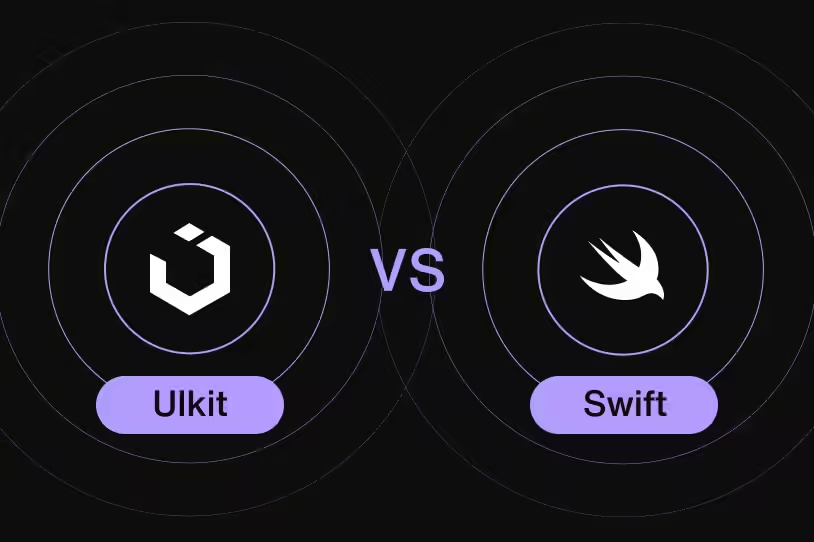As iOS 18 continues to evolve, developers are increasingly confronted with a critical decision: should they build apps using the newer SwiftUI, or stick to the tried-and-true UIKit? Both frameworks offer distinct advantages and cater to different aspects of iOS development. In this blog post, we’ll explore the pros and cons of SwiftUI vs UIKit, highlighting how these two frameworks compare in the context of iOS 18 development. Whether you’re starting a new project or maintaining an existing app, understanding the strengths and limitations of each framework will help you make the best choice.
SwiftUI: The Modern, Declarative Approach
1. What is SwiftUI?
SwiftUI is Apple’s declarative UI framework introduced in 2019 as a forward-thinking way to build user interfaces across all Apple platforms, including iOS, macOS, watchOS, and tvOS. SwiftUI offers a streamlined, code-driven approach where the UI is described in terms of what it should do, and the system takes care of rendering and updating the UI efficiently.

2. Key Features of SwiftUI in iOS 18
• Declarative Syntax: SwiftUI allows developers to describe the UI in a declarative syntax. This leads to more readable and maintainable code, reducing boilerplate and speeding up development.
• Cross-Platform Development: One of SwiftUI’s biggest strengths is its cross-platform capabilities. Code written in SwiftUI can be easily adapted to work across different Apple devices.
• Real-Time Previews: With Xcode Previews, developers can see changes in the UI in real-time, making development faster and more interactive.
• Native for iOS 18: SwiftUI has been continuously optimized and expanded with each iOS release, and in iOS 18, it offers a more robust set of APIs, making it easier to build complex, modern apps.
3. Benefits of Using SwiftUI
• Less Code, More Efficiency: SwiftUI minimizes the amount of code required to build complex interfaces, enabling faster development cycles.
• Future-Proof: As Apple continues to invest in SwiftUI, it’s becoming the go-to framework for developers looking to future-proof their apps. Apple is likely to phase out UIKit support in new features, making SwiftUI the standard for future iOS versions.
• SwiftUI Ecosystem: SwiftUI integrates seamlessly with Apple’s other technologies, including Combine for reactive programming, CoreData, and now SwiftData in iOS 18.
4. Drawbacks of SwiftUI
• Limited Backward Compatibility: SwiftUI requires iOS 13 or later, limiting its use for apps targeting older devices. While this may be less of an issue in 2024, developers maintaining legacy apps might still face challenges.
• Immature API: Despite several improvements, SwiftUI’s API is still catching up with UIKit in terms of features and stability for advanced scenarios.
UIKit: The Veteran Framework
1. What is UIKit?
UIKit has been the backbone of iOS development since the release of the iPhone SDK in 2008. It provides an extensive set of tools for building responsive and interactive user interfaces. Unlike SwiftUI’s declarative nature, UIKit is imperative, meaning developers have more control over every aspect of the UI, but it can also lead to more verbose and complex code.

2. Key Features of UIKit in iOS 18
• Mature and Robust: With more than a decade of evolution, UIKit is a highly stable and feature-complete framework that offers more granular control over UI elements.
• Advanced Animations and Gestures: UIKit provides a rich library for animations and gestures, allowing developers to build highly interactive and engaging experiences.
• Compatibility with Legacy Apps: For apps targeting a wide range of iOS versions, UIKit is still the best option, offering full backward compatibility to older iOS versions, which might be critical for businesses with a large user base.
3. Benefits of Using UIKit
• Fine-Grained Control: UIKit gives developers complete control over every detail of the UI. This is especially useful for creating custom or highly optimized UIs.
• Widespread Adoption: Since UIKit has been around for so long, there’s a wealth of documentation, tutorials, and a large developer community that can help solve complex problems.
• More Stable API: UIKit’s API has been refined over the years, making it stable and reliable for enterprise-level applications where predictability is key.
4. Drawbacks of UIKit
• Verbose and Complex Code: Building complex UIs in UIKit often requires significantly more code compared to SwiftUI. This can lead to longer development times and more opportunities for bugs.
• Not Future-Proof: With Apple’s increasing focus on SwiftUI, developers using UIKit might find it harder to access new iOS features in the future, as these will likely be first introduced through SwiftUI.
SwiftUI vs UIKit: How to Choose the Right Framework for iOS 18 Development
1. When to Choose SwiftUI
If you’re starting a new project or looking to future-proof your app, SwiftUI is the ideal choice. SwiftUI is the future of iOS development, with continuous updates and optimizations from Apple. It’s especially useful for:
• New apps targeting iOS 13 and above.
• Developers who prefer writing less code while leveraging modern, declarative syntax.
• Cross-platform projects: If you’re building apps that need to run across iOS, macOS, watchOS, and tvOS, SwiftUI is the best option.
• Developers interested in integrating Apple’s latest technologies like Combine and SwiftData.
2. When to Choose UIKit
For developers maintaining large, legacy applications, or for projects that need the stability and maturity of a time-tested framework, UIKit is still an excellent choice. You should opt for UIKit if:
• You need backward compatibility with older iOS versions.
• You require fine-grained control over the UI and interactions.
• Your app demands advanced animations and custom UI components.
• You’re working on an existing UIKit project where rewriting in SwiftUI might not be cost-effective.
The Hybrid Approach: Combining SwiftUI and UIKit
It’s worth noting that SwiftUI and UIKit are not mutually exclusive. Developers can leverage the strengths of both frameworks within the same project. For example, you can use SwiftUI to build new features while keeping legacy components in UIKit, or vice versa. Apple has provided several tools, such as UIHostingController and UIViewRepresentable, that allow for seamless integration between the two frameworks.
Conclusion: SwiftUI vs UIKit — Which Framework Should You Use in 2024?
In 2024, the decision between SwiftUI and UIKit depends on your project’s goals, app architecture, and user base. SwiftUI is the future of iOS development, offering a more modern, efficient approach to building UIs, but UIKit remains a powerful tool, especially for complex and legacy applications. Many developers are now taking a hybrid approach, using SwiftUI where it makes sense and falling back on UIKit when they need more control or backward compatibility.
As iOS 18 continues to shape the development landscape, mastering both SwiftUI and UIKit will give you the flexibility to tackle any project—no matter how big or small.

